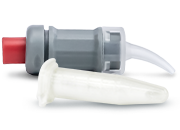
Teledentistry has been in practice for well over five years. It has been used to help reduce emergency room visits, opioid prescriptions, improve access to care. The advent of the coronavirus increased the need for dentists to provide care from a remote setting. Dentists have a great opportunity to provide quality care in the future now that insurance companies are reimbursing for teledentistry.
The Learning Curve
Dentists and staff may initially be uncomfortable offering video consultations. Each dentist may have reservations depending on their personality and skills with information technology (IT). Most companies will have a support team to walk the office through setup and training. For more considerations of IT security click here.
During the setup process it is important for dentists to have a structure be available for consultation during normal private practice hours such that the dentist isn’t available on demand. Having a software that has a structured time for appointments can make it easier for the dentist to review the patient’s chart and be prepared to provide sound dental advice. This will help the dental team have confidence in using teledentistry.
Services Offered with Teledentistry
Many skeptics may say it is not possible to practice dentistry over the phone; and they are correct. Dentists cannot make radiographs, place restorations, perform root canals, or pull teeth. Teledentistry can benefit the office by triaging the patient prior to an emergency care. During this time a relationship can be built with the parent to develop trust. If necessary, medications such as over the counter analgesics can be discussed, and if necessary, antibiotics can be electronically prescribed, and the patient can then be scheduled accordingly. Scheduling a patient more effectively can increase practice revenue.
Another use of teledentistry is for post-operative appointments. In certain situations, a post-operative visit may not necessitate an in person visit. This will save the staff on chair time, the expense of personal protective equipment (PPE), reduce no shows for post-operative visits at the office, and allow another child to be seen. If a situation dictates an in person visit, they can still be seen as normal.
The last use of teledentistry is emergency and urgency visits. Using the platform for these types of appointments can help keep patients out of the hospital, increase the number of new patients that are likely to schedule at the office, and provide current patients assurance that a dentist is available should they have a question arise.
The Ideal Teledentistry Platform
There are many different platforms available for dentists to use for teledentistry. Strong considerations should be given to a platform that has the following capabilities:
- Smartphone Application
- Practice Management Integration
- Electronic Prescribing
- Financing Mechanism
- Virtual Waiting Room
- HIPAA Compliant
What common pediatric dental problems can be addressed by using teledentistry?
In addition to allowing dentists to triage patients during office hours and provide emergency and urgency consultations some common problems can be addressed using teledentistry:
- Ectopic Eruption (Shark Teeth)
- Space Maintainer Issues
- Exfoliating Primary Tooth
- Debonded Crown
- Apthous Ulcer
- Teething Discomfort
- Orthodontic Appliance Problems
Free Trial
Teledentistry is offering a free trial until June 30th, 2020. To preview the uses of the application click here.
Dr. Vilas Sastry
Dr. Vilas graduated from Boston University’s Advanced Standing program in 2005. Since graduating, Dr. Sastry has helped to establish several practices in the Las Vegas area. His schedule allows him to care for his patients, as well as to contribute his time for several charitable efforts. Dr. Sastry finds caring for the dental implant needs of his patients—ensuring their implants are fully functional and display an awesome smile— to be especially satisfying. Dr. Sastry has several reviews that attest to his ability to deliver anesthetic without his patients even feeling a thing. He truly espouses the statement “Stress Less and Smile More”!


